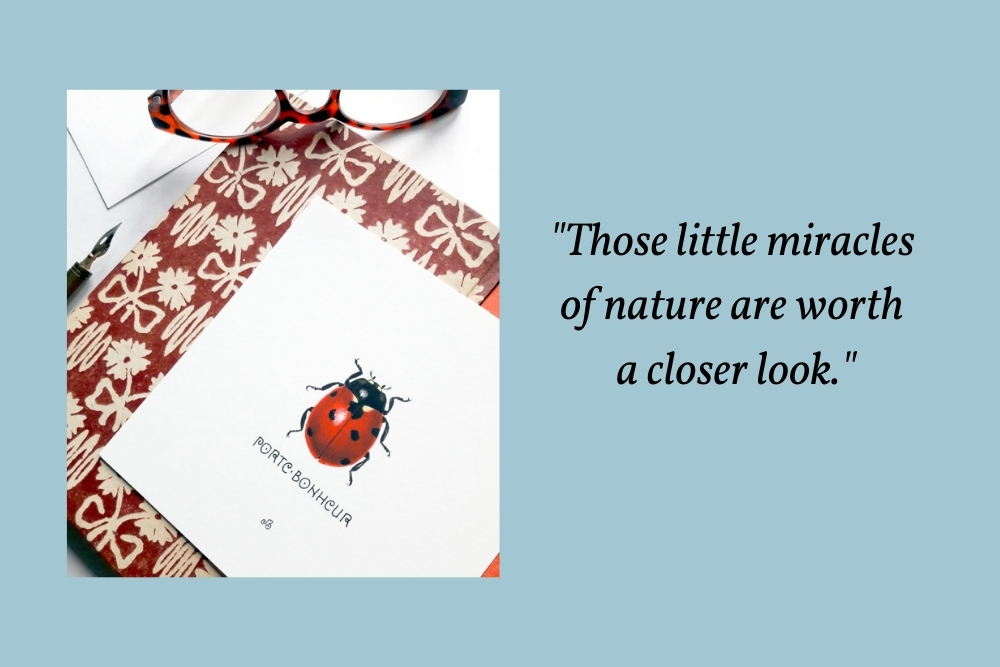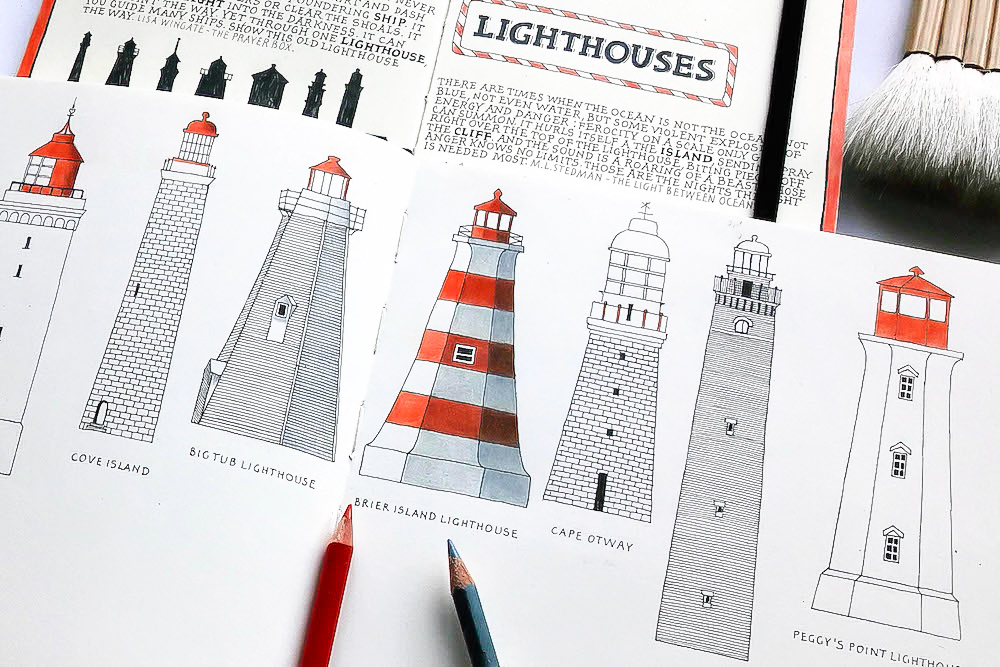Bruges-based Joke Boudens is a multidisciplinary artist whose wide range of works includes lettering, calligraphy, illustration and printmaking. Whimsical critters, exquisite hand lettering and intricate patterns featuring elements of geometry and tiny botanicals are a common thread in her work, but you can also find unique illustrated collections of pretty much anything, from combs and ex-votos to postage stamps, pen nibs and lighthouses.
We are thrilled to welcome Joke to our blog to learn about her creative journey and the inspiration behind her work.
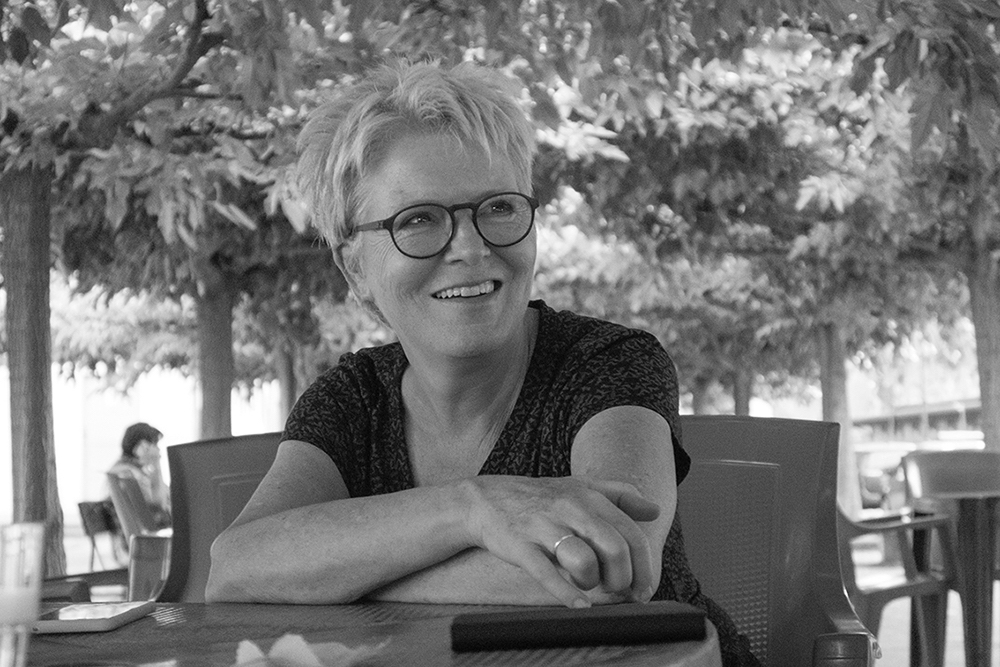
1) How did you get into lettering and calligraphy?
I grew up in an artistic family with an art teacher as a mother and a calligrapher as a father. I have always been surrounded by art and letters, and as a child I was always into creative things like drawing and claying. After high school there were two things I wanted to study: Romance languages or Art. I opted for the latter, but after graduating I started working as an embroidery teacher for adults – a job I got by chance. After a long time of embroidery – which I did with all my heart and soul – I now devote myself to lettering and illustration.
2) How would you describe your personal style and aesthetic?
I have an insatiable appetite for the aesthetic, and my work can be defined as meticulous and detailed, with a penchant for horror vacui. Colours are very important to me. I’m always looking for new and exciting colour combinations. On the other hand, I do love the graphic feeling of black and white. Mostly I combine letters and illustration.
My black and white illustration work is largely done using fine pigment liners. On my illustrations I use watercolour, gouache or colour pencils, and for the calligraphy I use water-soluble ink, and sometimes gold leaf.
3) Has anyone or anything in particular inspired your creativity and artistic passion?
I think the setting in which I grew up has played an important role in that. I was born and have since been living in the beautiful medieval city of Bruges, and its rich history has inspired and still inspires me to this day. Flanders is where, in the 15th and 16th century, Flemish Primitives such as Jan van Eyck and Hans Memling created their world-renowned works of art. I think I work in the same spirit. I also love the illustrations and calligraphy from Boksay and Hoefnagel in that insanely beautiful manuscript “Mira Calligraphiae Monumenta.” But first and foremost I was, of course, inspired by my father!
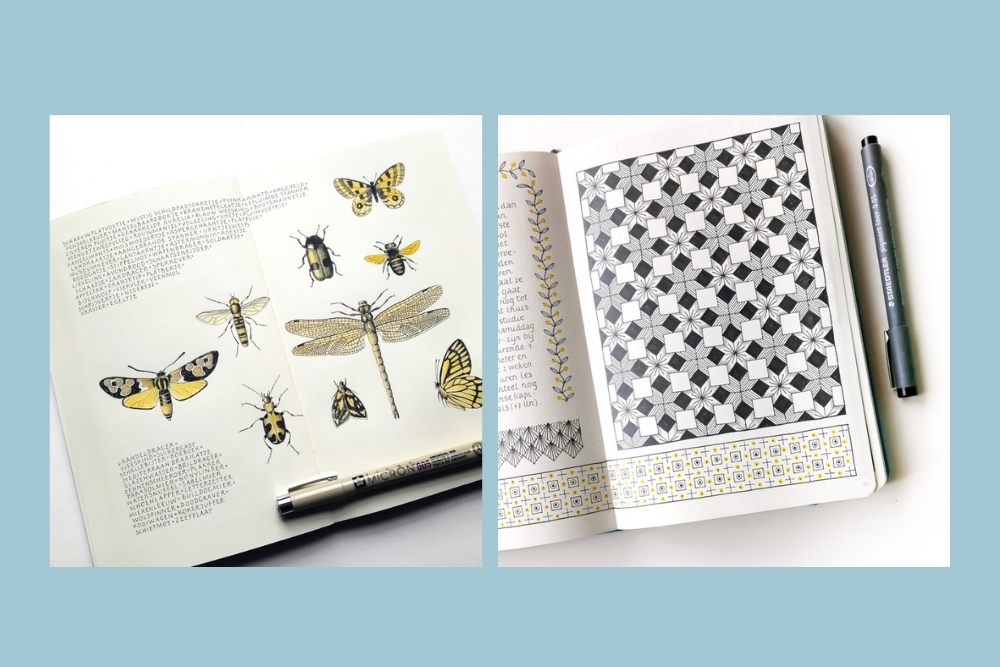
4) Insects and patterns seem to be predominant in your work. Can you tell us more about your fascination with these?
Beetles, butterflies, plants, shells, stones have always been an important part of my artistic work. Those little miracles of nature are worth a closer look. My wish is to draw people’s attention to them. I’m extremely concerned about the extinction of plants and animals, and maybe my work can help people become aware of the problem.
5) What about your use of patterns?
I started drawing patterns during the first lockdown set by our government to contain the COVID-19 virus and I set a personal goal: to complete at least one booklet with different patterns, during which I just let my mind go blank. Working on that on a daily basis really helped me to bridge this period, as it still does. I even started a second one!
6) Do you have a particular style or medium you prefer to work with?
I like to work with watercolour (Winsor & Newton), gouache (Talens, Winsor & Newton), pigment liner (Staedtler, Artline, Slicci), graphite pencil and colour pencils (Caran d’Ache, Faber-Castell). However, I absolutely have no affinity at all with acrylic paint and I only use digital technology to clean up my scanned illustrations in Photoshop when I want to make prints of them.
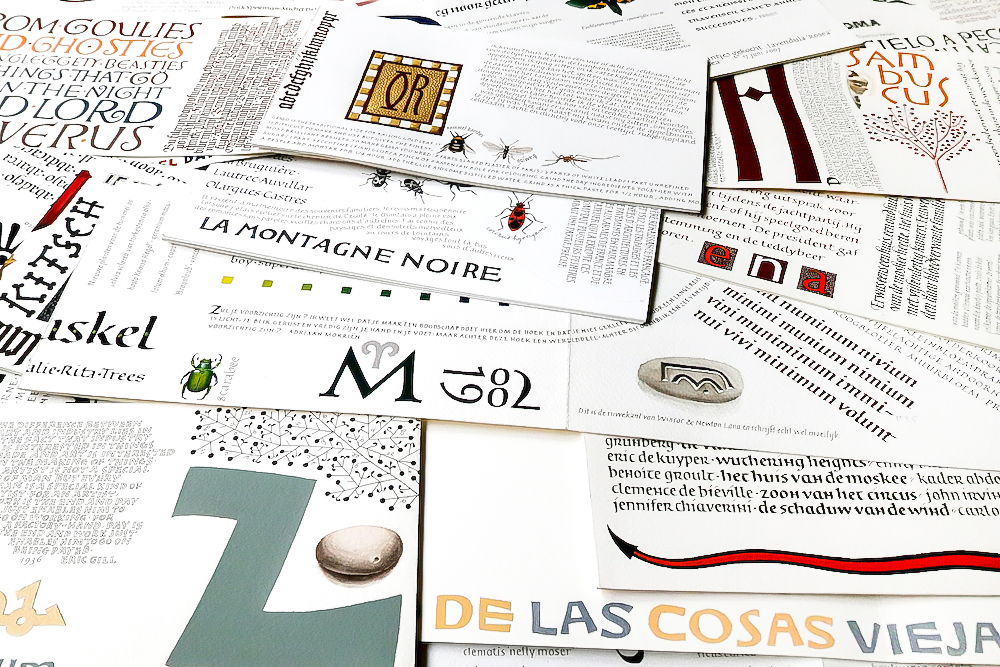
7) Where do you find inspiration?
My inspiration comes from daily life, nature, folk art, and I love collections and lists, as well as foreign languages, just to name a few. I do a lot of research on the internet, topics of all kinds being accessible within just a few clicks. Since I was a child I have been attracted by the so-called Sunday painters or naïve painters such as Le Douanier Rousseau, Sal Meijer, Grandma Moses, Boilauges … but also by the geometric perfection of Wes Anderson movies, the patterns and colours in Indian miniature art, the simplicity in Fraktur art and the layout work in medieval botanical illustration books. I think all these things have a visible impact on my work.
8) What are your other passions in art or life?
I love music, gardening, walking, cooking, reading books, watching films and true crime documentaries, and studying languages. I have a penchant for beautiful objects and I like to visit botanical gardens. History fascinates me, and lately I’m even digging into my own family history, so now I’m the family genealogist.
9) What has been the biggest benefit in keeping a sketchbook?
First of all, I love sketchbooks and I work on several simultaneously. I’m not too picky, but I don’t like them wire-bound and the paper has to be off-white and not too thin. My first two sketchbooks were cheap and had a lower quality paper. This allowed me to work free of any stress. All the sketchbooks I have bought since, have good quality paper and it feels so much better to work on. The basic idea behind each of these is to use them for mere “sketches” of ideas, intended to serve for new original pieces and prints. But every one of them ends up with elaborate drawings and paintings.
In 2013, I started a pocket-sized journal for our trips abroad. I try to sketch my observations and memories right on the spot, but sometimes I’m forced to take some pictures and complete the travelogue when at home. The biggest benefit of this journal is definitely the ability to look back at memories and adventures. There’s nothing quite like the feeling of recalling all the countries that I visited and the people I met.
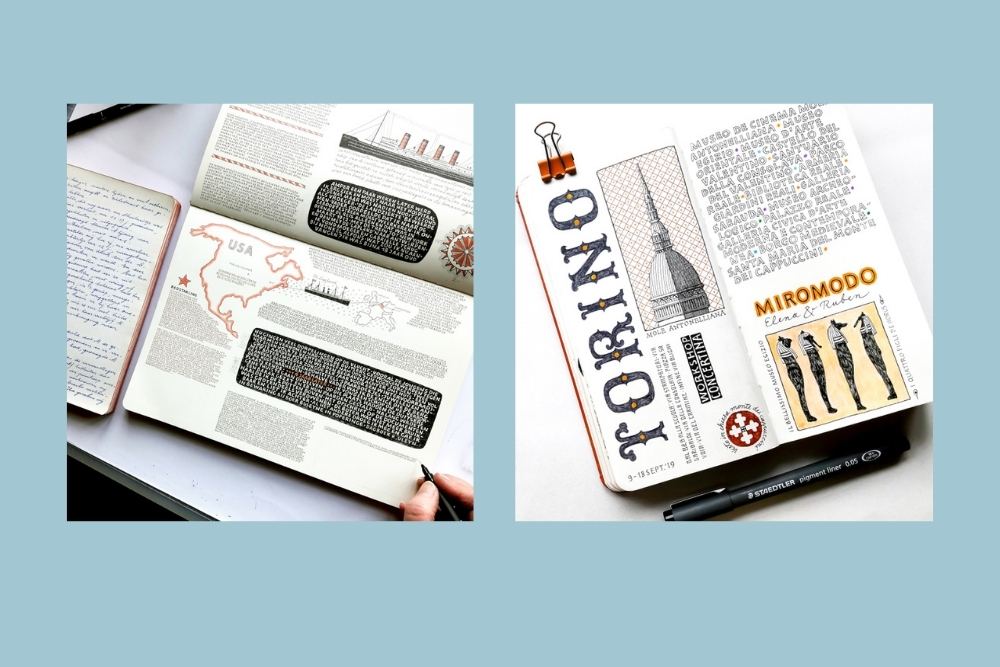
10) Any advice you would like to share with aspiring artists?
Work hard, but don’t ever try to force your work to fit trends and fashions in the art or the desires of the masses.
BONUS
You might remember our recent interview with Halewijn Bulckaen. At the end of his interview, without us asking him, Halewijn nominated Joke to be featured. We loved the idea so much that we decided to start a tradition of #ArtistsSupportingArtists, and now we ask every artist we feature to do a shoutout to a fellow artist. Here is Joke’s:
“I would like to nominate Inger Ohlsson, a Swedish fellow artist that I met on Instagram. She’s a nature lover, a happy soul and kindred spirit and when I discovered her work it made my day!”
To learn more about Joke’s work, visit her website and blog or her Instagram account.
